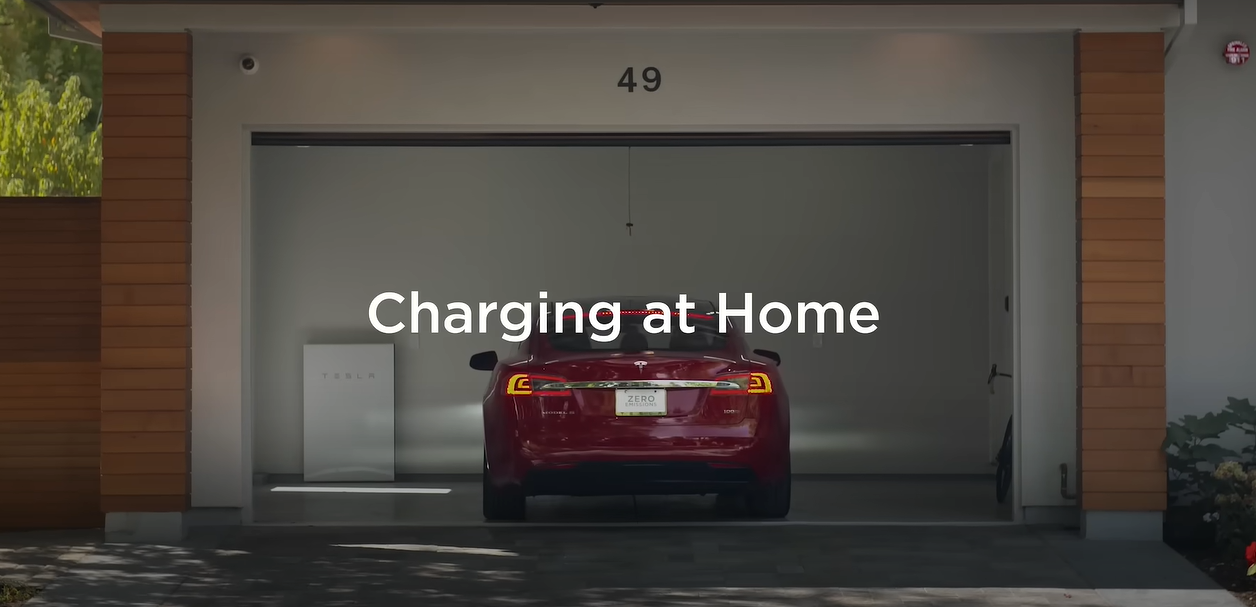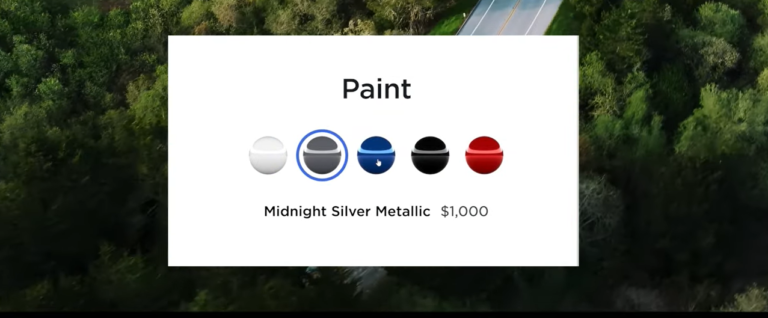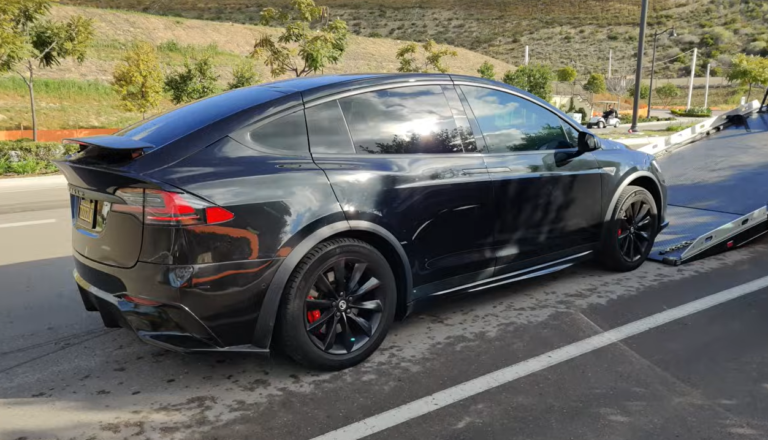How To Charge Tesla at Home
As electric vehicles (EVs) become more prevalent, knowing how to charge a Tesla at home has become essential for Tesla owners. The convenience of charging your vehicle right in your driveway or garage brings a new level of accessibility to your daily commutes and road trips. In this guide, we’ll cover everything you need to know about charging your Tesla at home, including methods, costs, and time considerations.
Understanding Tesla Charging Options
When you purchase a Tesla, you have multiple options for charging your vehicle at home. The best method for you will depend on your individual circumstances, such as your home’s electrical capacity and your driving habits. Here are the primary ways to charge a Tesla at home:
1. Standard Household Outlet
The simplest method involves using a standard 120-volt household outlet, often referred to as a Level 1 charger. This option is widely available, but it’s also the slowest way to charge your vehicle.
How Long Does It Take to Charge a Tesla Using a Standard Outlet?

Using a normal power point to charge can take quite a long time. For example, if you plug your Tesla in at 6 p.m. with a battery level of 20%, you might find that it takes around 24 hours to fully charge your vehicle. You would see a modest increase in your battery level, achieving approximately 55% charge by 9 a.m. the next morning.

If you’re starting with a 20% battery, by using a standard household outlet, you can expect it to take about 22.5 hours to charge from 20% to 100%. In that time, you would have added roughly 42 kilowatt-hours (kWh) to your battery.
Costs Involved
Charging with a standard outlet does come with some costs. If your electricity provider charges around $0.29 per kWh, then charging your Tesla from 20% to 100% would cost you approximately $12.88. While this is relatively affordable, many owners soon find that they desire a quicker method.
2. Tesla Wall Connector
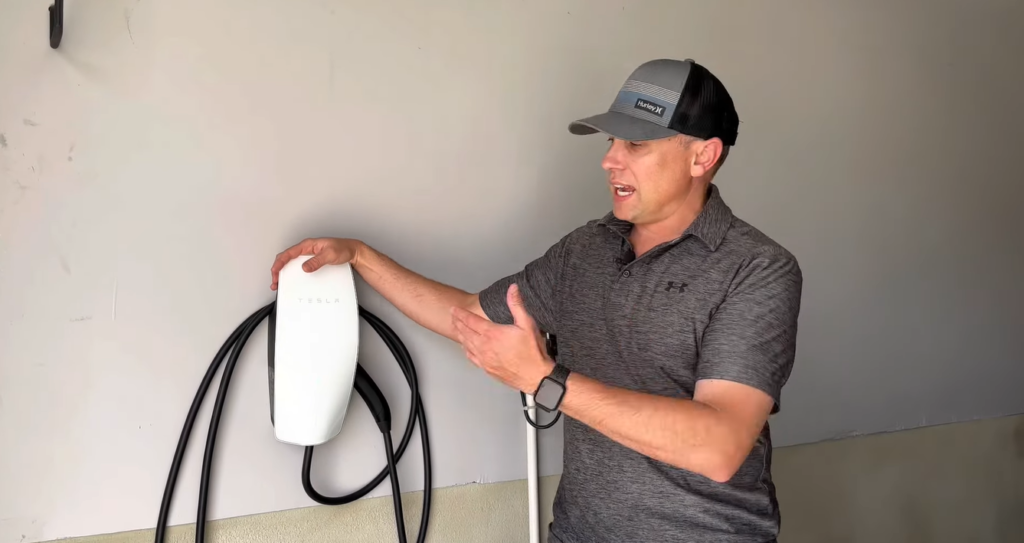
A more efficient option is the Tesla Wall Connector, or Level 2 charger. This unit can be installed in your garage or outside your home and provides faster charging times.
Advantages of Using a Wall Connector
Faster Charging: With a Wall Connector, you can charge your Tesla much more quickly. Typically, it can deliver up to 48 amps of power, significantly reducing the time it takes to charge your vehicle compared to a standard outlet.
Convenience: Once installed, it makes topping off your charge an effortless and routine part of your day.
Installation Tips
When considering how to charge a Tesla at home using a Wall Connector, it’s essential to consult a licensed electrician. They will help determine the right setup for your home’s electrical system, ensuring that it can support the charger without overheating or overloading the circuit.
3. Mobile Connector
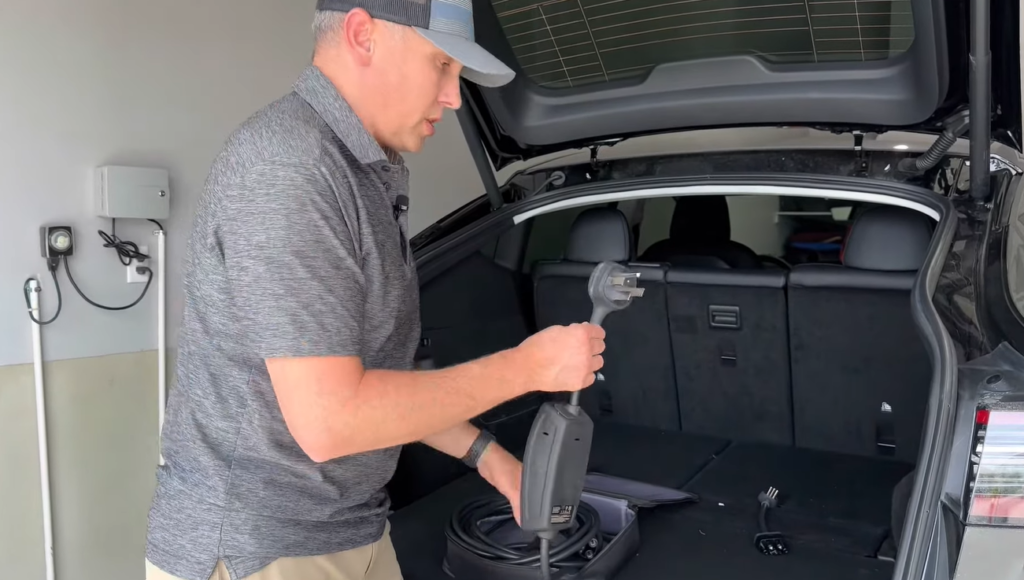
The Tesla Mobile Connector provides another option for charging. It comes with your vehicle and allows you to charge from a variety of outlets, including standard 120-volt outlets and NEMA 14-50 outlets, which are 240 volts.
Versatility and Portability
The Mobile Connector is ideal for Tesla owners who travel or don’t have a dedicated charging station at home. It’s portable, versatile, and can be plugged into different outlets, providing flexibility for charging when you are away from home.
Charging Speed Comparison
When it comes to how do you charge a Tesla at home, speed is a crucial factor. Here’s a quick breakdown of charging times for the different methods:
- Level 1 (Standard Outlet): Adds approximately 3-5 miles of range per hour.
- Level 2 (Tesla Wall Connector): Adds approximately 30-44 miles of range per hour, depending on the amperage of the connection.
- Mobile Connector (using NEMA 14-50): Similar to Level 2, it can add around 30-44 miles of range per hour.
If you frequently find yourself needing a charge, opting for a Wall Connector may provide the best long-term value.
Planning Your Charging Needs
Estimating Daily Consumption
Understanding how to charge a Tesla at home begins with knowing how much energy your vehicle consumes daily. On average, a Tesla consumes about 4 miles of range per kWh. If you drive around 30 miles a day, you would require approximately 7.5 kWh for that daily commute.
Setting Up a Charging Schedule
Given that you can estimate your daily energy needs, it’s beneficial to set up a regular charging schedule that aligns with your routine. For instance, charging your vehicle overnight allows you to start your day with a full battery.
Monitoring Your Charging
Using Tesla’s In-Car Features
Tesla vehicles come equipped with smart charging features that enable you to monitor your charging sessions directly from the dashboard or the Tesla mobile app. You can view charging progress, set charging limits, and even schedule charging sessions to take advantage of lower electricity rates during off-peak hours.
Smart Home Integration
If you enjoy technology, consider integrating your charging setup with your smart home system. This way, you can control charging remotely, ensuring that your vehicle is ready whenever you need it without the hassle of managing cables or worrying about leaving the car plugged in too long.
Cost Considerations
Initial Investment
While standard outlets are inexpensive and easy to use, investing in a Tesla Wall Connector or a dedicated circuit might be beneficial in the long run. The cost of a Wall Connector installation will vary based on electrical work required and local rates but can significantly reduce your long-term charging costs.
Electric Rates
It’s also wise to familiarize yourself with your local electricity rates. Some regions offer lower rates during specific hours, so timing your charges can save you money.
Conclusion
In summary, understanding how to charge a Tesla at home is crucial for every Tesla owner. From the slow but accessible standard outlet to the efficient Wall Connector, each option offers various benefits and considerations. As electric vehicles continue to grow in popularity, knowing how to effectively manage your Tesla’s charging will make EV ownership not only more enjoyable but also more economical.
Whether you’re a newcomer to the world of electric vehicles or a seasoned enthusiast, taking charge of your charging strategy will undoubtedly enhance your Tesla ownership experience. So plug in, keep track of your usage, and enjoy the benefits of seamless, eco-friendly driving.
Additional Tips
- Stay informed: Keep abreast of developments in EV technology and charging infrastructure.
- Check for rebates: Many local governments offer rebates for EV home charging setups, which could alleviate some initial costs.
- Maintain your charger: Regularly inspect your charging equipment for any signs of wear or damage to ensure safe operations.
Now you’re well-equipped to charge your Tesla at home efficiently! Enjoy the ride!

